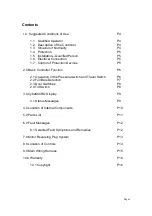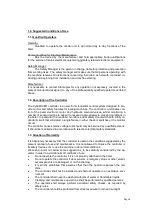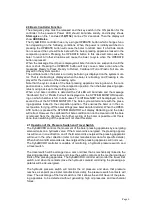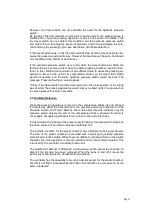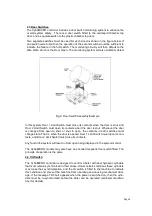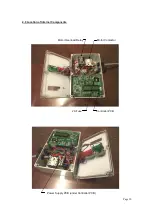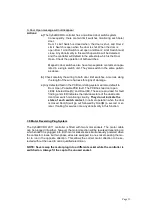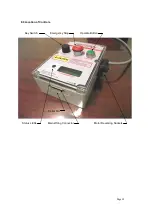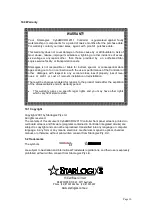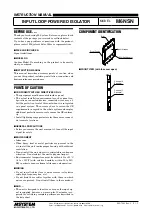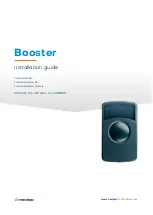
2.2 Full Bale Detection
When the pressing apparatus is moved in the compression stroke, its end of travel
is detected by either the travel switch or the pressure switch (see Operation of the
Pressure Switch and Travel Switch). When the baler fills with material only the
pressure switch detects the end of the compression stroke, because the baler is
not capable of supplying sufficient force to drive to the end of its stroke.
In this situation the closing of the pressure switch before the travel switch closes on
the down stroke will be used to indicate Cardboard Full.
The full bale condition for the plastic chamber has a different sensing mechanism.
The side of the plastic chamber is provided with a small spring biased pressure
plate linked to a limit switch. When there is sufficient compaction force in the plastic
chamber, the pressure plate is moved outward and the limit switch actuated. This
is sensed by the controller to indicate Plastic Full.
The cardboard chamber is fitted with a twine sensor which allows the controller to
detect if the full bale has been removed. When the twine is tied off it resets the
twine sensor and resets the Cardboard Full condition.
The controller has the capability to monitor a similar sensor for the plastic chamber,
but this is not fitted. Consequently the Plastic Full condition is reset as soon as the
baler is retracted.
However, the travel switch can not eliminate the need for the hydraulic pressure
switch.
As the baler fills with material a point will be reached where the pressing force is
insufficient to cause the pressing apparatus to move to the ends of its stroke. Thus
the travel switch can not detect this condition, but the hydraulic pressure switch
can detect the oil reaching the set-point pressure, and then de-energise the sole-
noid and stop the pressing cycle (see description of full bale detection.)
If the travel switch were to fail the baler will still stop at both ends of its stroke be-
cause the pressure switch will close. However the machine will detect a Cardboard
Full condition at the bottom of each stroke.
If the hydraulic pressure switch were to fail when the travel switch was fitted, the
fault would only become evident when the baler pressing chamber was full of ma-
terial. In this condition there would not be sufficient force to cause the pressing ap-
paratus to travel to the end of its compression stroke, so the travel limit switch
would not operate, and the faulty hydraulic pressure switch would not work. The
message ‘Pressure Sw Open’ would appear.
Finally, if the travel switch contacts were jammed in the close position or the wiring
was shorted, the pressing apparatus would only cycle down (after the operate but-
ton was pressed) for about 3 seconds.
Page 7



